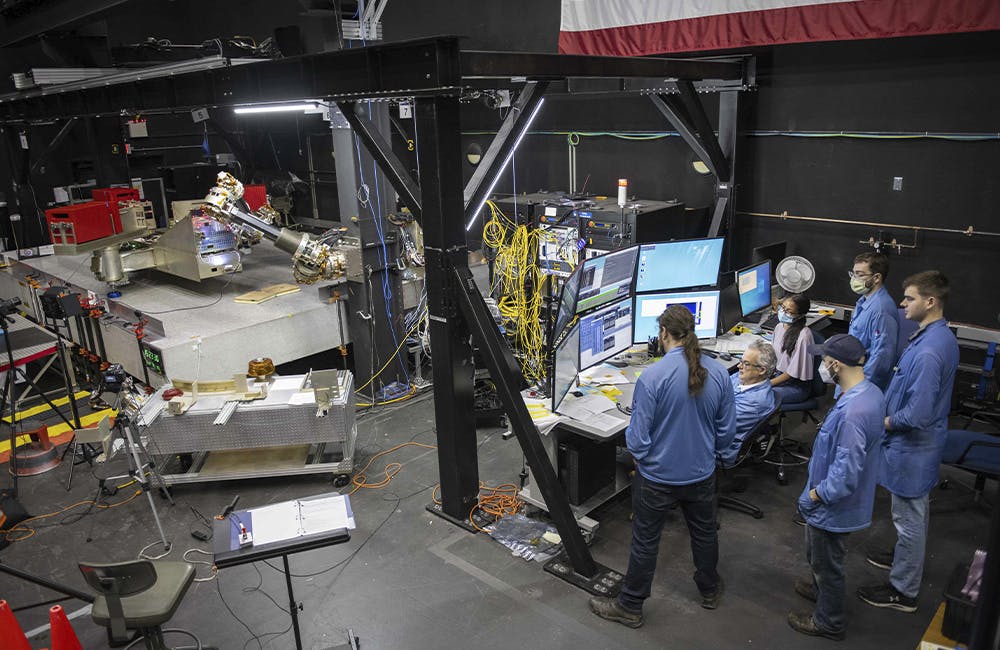The Next Generation of Soldiers Will Be Software Engineers
DOD’s IT modernization challenges warfighters to think beyond tactical skills.

The Defense Department wants the next generation of soldiers to be more than warfighters: DOD wants them to be software engineers who can manage warfighting technology applications on the battlefield to meet mission demands.
This initiative is one prong of the department’s IT modernization push to deploy emerging technologies like Agile software development, RPA, and others to refine mission delivery.
Hannah Hunt, Chief Product and Innovation Officer at Army Futures Command, said DOD used to think there was “little value” for soldiers to engage in software activities.
But technology continues to reshape how DOD fights wars, shifting DOD’s mindset and forcing DOD to adapt.
“We like to talk about this quote where we could be the next Blockbuster, when the CEO said neither Netflix or Redbox are on our radar back in 2008,” Hunt said at the FCW Emerging Tech Forum this week. “We don’t want to be like that.”
DOD now prioritizes “software factories” like Army Futures Command (AFC) and the United States Air Force’s (USAF) Kessel Run. These software factories “upskill” soldiers and airmen to handle technology needs and demands on the battlefield and in various warfighting scenarios.
“The Air Force really pioneered this with Kessel Run,” Hunt said. “There were great successes that came from this model. The Air Force set the precedent for software and DevSecOps methodologies and getting it into a user environment. The Army is, in my view, very much behind when it comes to implementing cloud technologies, so it’s really wonderful we’re bringing this into the Army.
AFC established a software factory in Austin, Texas in May 2020 to upskill soldiers for the “future battlefield,” which requires the ability to “produce modern software through organic means,” which include cloud technologies and Agile software development, Hunt said.
Within six months, soldiers develop proficiency in product management, design, and software engineering. The factory brings in 30 soldiers and civilians every six months, where they stay for a three-year IT boot camp.
“More often we’re looking for the right attitude [rather] than the right capability,” Hunt said. “Our first cohort is building actual software applications as we speak and getting those products into the hands of users, they started work in July and have already made significant progress with stakeholders to build these capabilities.”
The AFC software factory in Austin is more than just an IT boot camp for soldiers – it’s also a pipeline for DOD.
“The software factory co-leads the Army DevSecOps ecosystem,” Hunt said. “What’s really unique about us is we’re streamlining and automating tools and platforms through an approved process to deliver apps with a continuous ATO model. We are constantly iterating software through an ATO pipeline. We have a fully integrated path to production.”
Complementing DOD’s software factory initiative is the department’s robotic process automation (RPA) initiative, which aims to reduce or eliminate rote tasks for DOD personnel and free them up for more important, creative work.
Elizabeth Chirico, who leads the Acquisition Innovation Through Technology team in the Office of the Deputy Assistant Secretary of the Army, said the Determination of Responsibility Assistant (DORA) bot reduced the one-hour task of evaluating potential contracting vendors down to five minutes, which “adds up really quickly.”
Besides boosting productivity, RPA can help DOD with regulatory compliance, Chirico said at the FCW Emerging Tech Forum.
“Section 889 is part of the NDAA and prohibits DOD from purchasing certain telecommunications supplies or services, and there’s a checked list we’re not allowed to do business with or purchase supplies from for various reasons,” she said. “A lot of this information is required for vendors to upload into SAM or certify at SAM.gov. We were able to build in a [bot] to check for 889 information in SAM.gov as well. That came back in the body of our email to our users. Designing that process to save some time to help our contracting folks determine that quickly. [The Office of the Secretary of Defense’s] pricing and contracting office also offers a bot that checks 889 as well. It’s a very important check.”
Chirico said her office is looking for new ways to expand the DORA bot’s capabilities to further improve productivity and compliance.
This is a carousel with manually rotating slides. Use Next and Previous buttons to navigate or jump to a slide with the slide dots
-

Marine Corps Operation StormBreaker Slashes Software Delivery Timelines by 17x
New program aims to deliver critical digital capabilities to warfighters at the "speed of relevance" by overhauling traditional processes.
4m read -

Software Factories Accelerate Federal Modernization Outcomes
IT leaders from Nutanix and SAIC explain how software factories streamline tech development, modernize legacy systems and accelerate adoption of emerging technologies like AI.
34m watch -

AWS Summit: Innovation Accelerates IT Delivery at DOD
Marine Corps Community Services is tackling outdated IT processes with agile development and cutting-edge cloud security to deliver mission-critical capabilities faster.
12m watch -

Carahsoft DevSecOps Conference
Join us for the 3rd annual Carahsoft DevSecOps Conference for a day of learning and networking with some of industry and government’s top DevSecOps leaders.
Carahsoft Conference and Collaboration Center, 11493 Sunset Hills, Reston, VA 20190 -

Accelerating Software Modernization in Defense
The Defense Department modernizes software to enhance national security with agile development, DevSecOps and emerging tech like AI and quantum computing.
15m read -

Platform One Tackles Next Phase in Software Delivery
The software delivery engine sets its sights on DevSecOps infrastructure and preparing for a post-quantum future as it matures.
7m read -

Pentagon's Software Modernization Plan Targets Speed
Pentagon software modernization shifts toward agile development and integration of user feedback to maximize operational capabilities.
6m read -

Pentagon Ramps Up Tech Development for Replicator Program
Defense officials stress the need for accelerated software development to scale autonomous systems and meet Replicator's summer deadline.
6m read -

RICE is a Key Ingredient of DOT’s IT Modernization
DOT's recently launched RICE platform streamlines application development to improve efficiency, security and public-facing services.
5m read -

Pentagon Revamps Tech Strategies to Advance DevSecOps
Updated Pentagon software development strategies aim to accelerate delivery and reduce waste.
4m read -

DOD Zero Trust Chief: ZT Implementation Requires Clearer Standards
Randy Resnick, director of the DOD Zero Trust Portfolio Management Office, announced an upcoming memo to eliminate ambiguity on its zero-trust guidelines.
5m read -

Report: Innovation, Emerging Tech Will Define Global Power Structure
A new report suggests a path to unleash innovation and partnerships to harness technology as a global superpower.
3m read
















